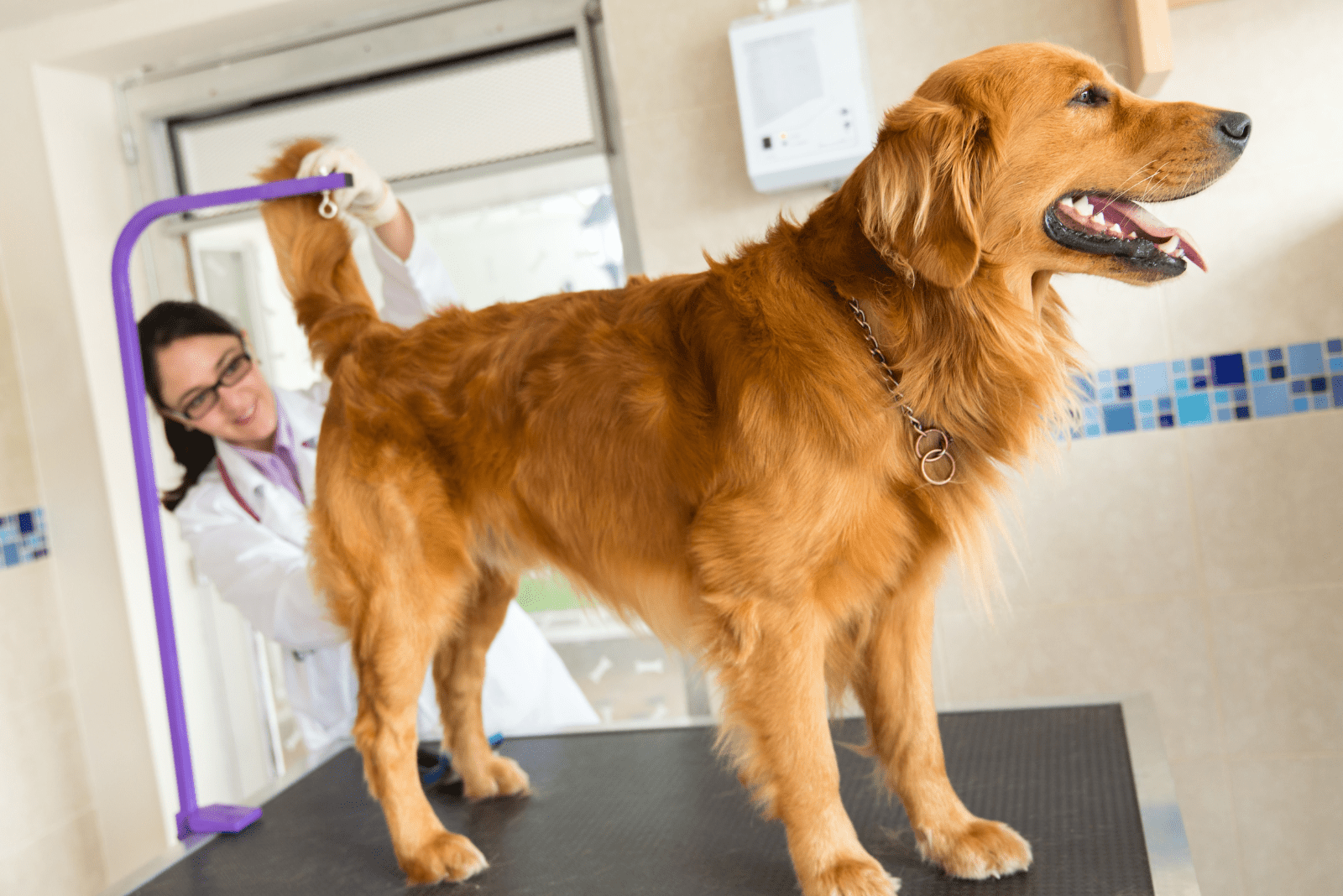Experienced dog owners have experienced dog scooting at least once! If you are a new dog owner or a long-time dog owner who has not yet seen their dog scooting all over the place, but now you have, you are probably here to find out what to do about this issue.
Dog scooting is a common ailment amongst dog owners and it can be a very frustrating and embarrassing experience. However, this problem can be easily solved at home with the right remedies.
We have prepared 14 amazing home remedies for dog scooting that you can try right now! You probably have all ingredients at home — your dog and its itchy butt!
This article provides a list of home remedies for dog scooting that can help you deal with this unpleasant condition.
Is There A Natural Remedy For My Dog’s Scooting?
Yes there is!
And we are going to tell you all about natural and home remedies from dog scooting.
But, before figuring out how to stop your dog from scooting its butt, it’s important to find out why your dog is scooting its butt.
Most of the time, dog scooting is a result from anal gland problems, in which your dog smells like fish and scoots its butt all over the place. However, there are other health issues such as intestinal parasites, constipation, problems with the digestive system, and so on.
Although there is a natural and home remedy to this problem, you should always inform your veterinarian about your dog’s scooting and have him/her do a health check.
What Is The Most Reliable Home Remedy For Dog Scooting?
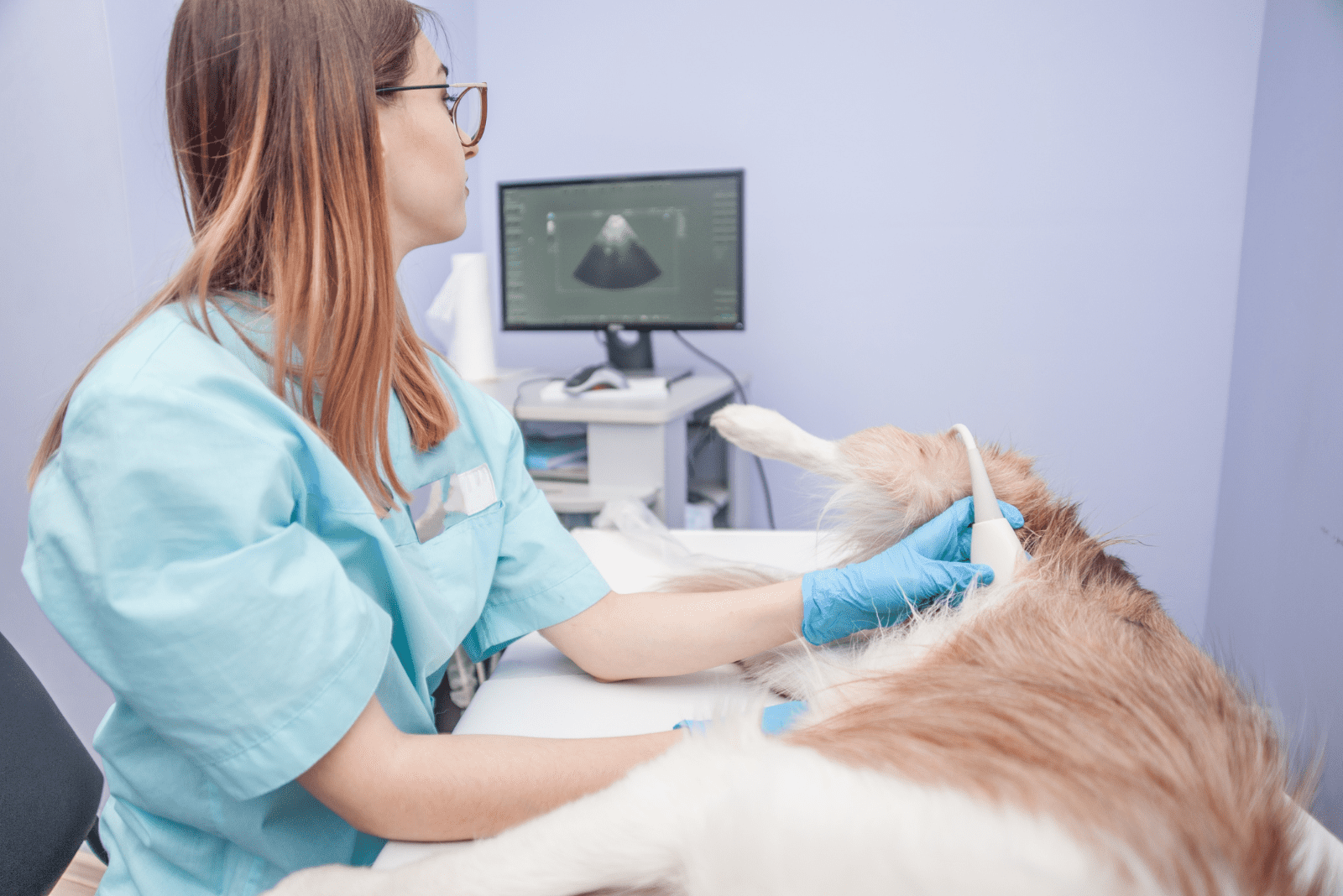
There are a few home remedies that dog owners stick to when their pooch is scooting. The most reliable home remedy is extraction of anal sacs.
Although it is a pretty smelly and messy job to do, pet parents can do it by themselves at home. But, this home remedy is not the only solution to a dog’s scooting problem.
The cause of scooting may not always be a full anal sac, even though they are to blame for the majority of dog scoots.
Dog scooting can occur for many other reasons that we are going to talk about in a bit.
But first, let’s check out some of the following home remedies for dog scooting!
How Do I Get My Dog To Stop Scooting His Butt?
The question that we have all been waiting for! It’s time to take action and stop your dog from scooting its butt! How are we going to do that?
Each of these home remedies that we are going to mention in this article is non-invasive, which means that your pooch won’t feel uncomfortable during any of these procedures.
Oh, and you might need some tips on getting rid of the fishy smell around your apartment. Cleaning your carpet from dog scooting is similar to cleaning your carpet from dog diarrhea stains, except that it might smell worse than diarrhea!
1. Clean Your Dog’s Bottom Regularly
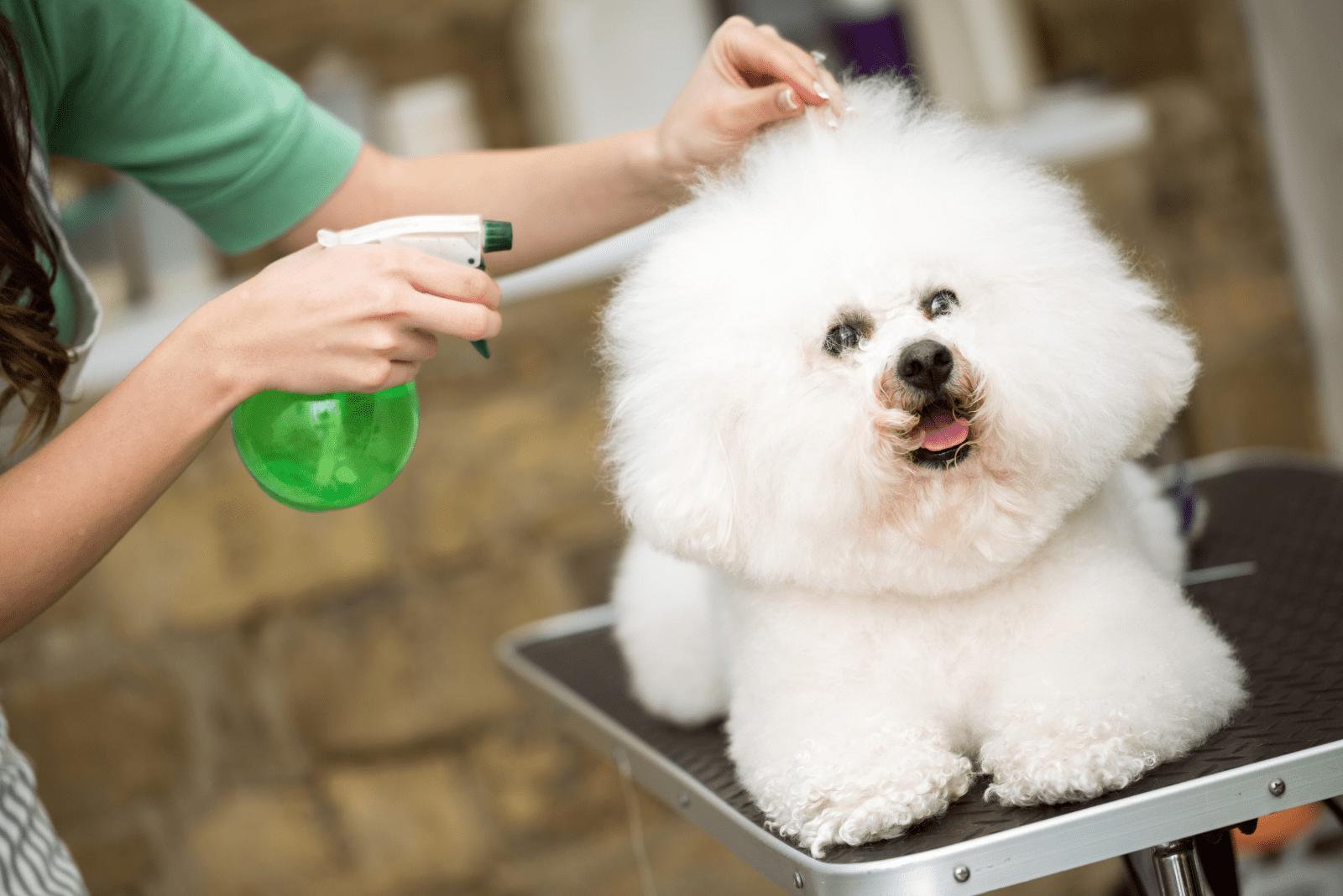
Cleaning your dog’s bottom regularly is a good idea, even when it isn’t scooting.
During scooting, your dog’s rear end is directly touching the surface of a rug or grass. Due to friction, the skin on your dog’s anus becomes red and inflamed. Such skin has micro cuts that are the perfect pathway to pathogenic organisms that are found on various surfaces your dog scoots its butt on.
You don’t want any dirt or poop on a dog’s inflamed anus!
Simply clean your dog’s bottom with a natural soap or dog-friendly wet wipes. This way you are keeping the area clean and lowering the risk of infection.
What Are The Benefits Of Giving My Dog A Bath?
Giving your dog a full bath may have benefits for scooting. Firstly, bathing takes off the fishy smell from your dog.
Secondly, bathing may provide relief for a dog that’s scooting. It may feel very refreshed after bathing in lukewarm water.
But, full dog baths should not be practiced each day, even when your dog’s scooting all of the time. Too much of anything isn’t a good idea. Frequent dog baths will lead to a dry and brittle coat that is stripped of its natural oils.
Therefore, it’s better to clean your scooting dog’s bottom frequently, rather than give it full baths.
2. Use Anti-Inflammatory Treatments
We previously mentioned that your dog’s rear end can become very inflamed due to frequent scooting. When this happens, it’s best to try with anti-inflammatory treatments and medications to help soothe the redness and discomfort that your scooting dog is experiencing.
Even though there are natural anti-inflammatory substances like witch hazel and calendula, they are not as effective as pharmaceutical anti-inflammatory medications.
After taking your scooting dog for a health check, your veterinarian will let you know whether or not it needs anti-inflammatory treatments. Never administer any medication to your dog without the guidance of a licensed veterinarian!
3. Use Warm Compresses
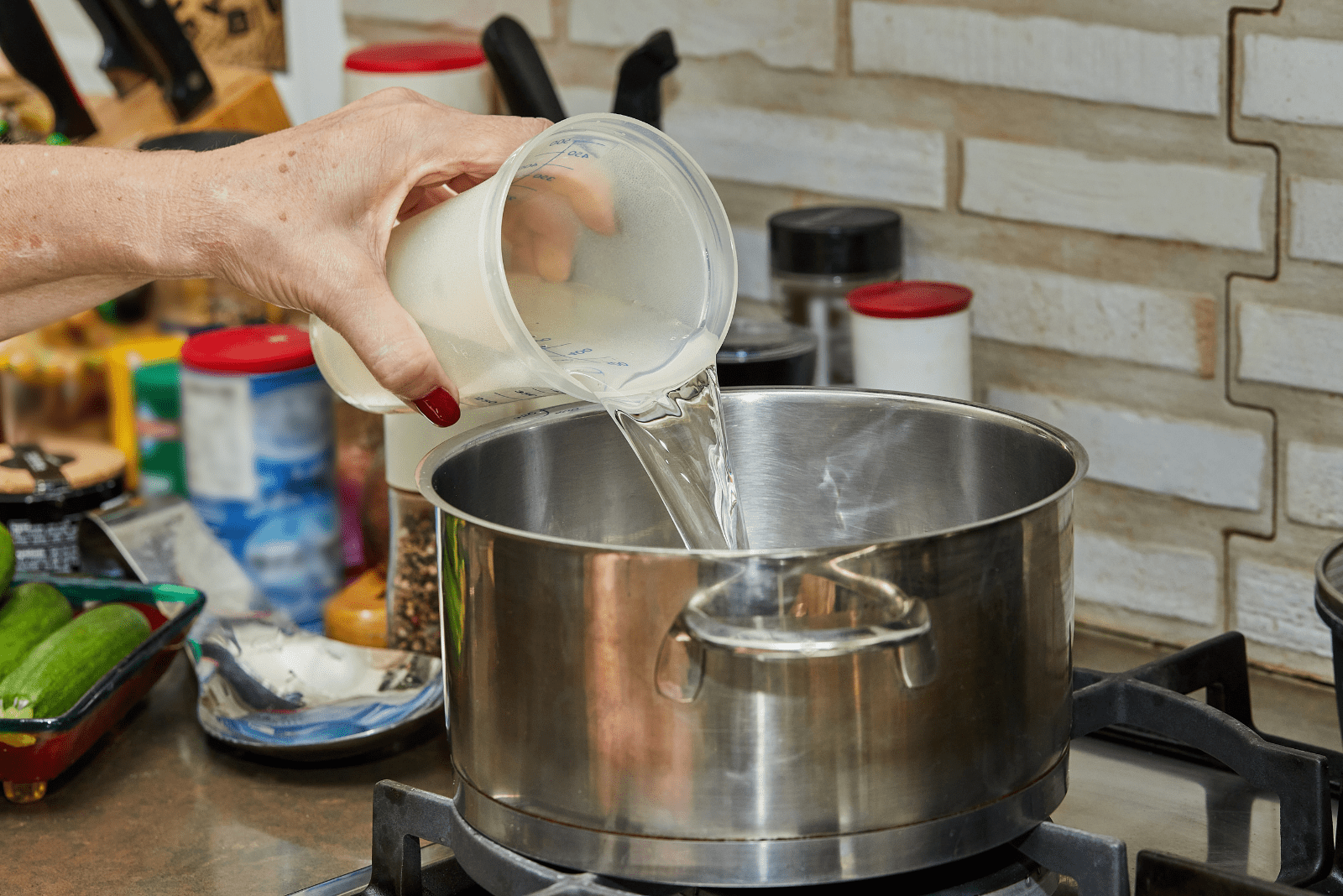
A warm compress is an easy and quick method to momentarily reduce the swelling around your dog’s anus. However, it is not a non-lasting solution, but it sure eases the pain and pressure for a few hours.
Not only are warm compresses good for relieving your dog from an uneasy feeling, but they also aid in anal sac fluid drainage.
Applying a warm compress will raise the temperature within your dog’s anal region, making the fluid inside your dog’s anal sacs more liquidy and easier to drain on its own.
To prepare a warm compress for your pooch, you will need:
• Bowl
• Warm water
• Epsom salt
• Cloth or towel
Combine one tablespoon of epsom salt (or sea salt) in a bowl of warm water and wait until it dissolves. You want to make sure that you’re using a clean bowl and a clean towel.
Take your cloth or towel and soak it into a bowl of warm water, drain it, and gently apply it to your dog’s bottom.
Warm compresses are proven to be more effective when repeated three to six times per day. Leaving them on your dog’s bottom for about five minutes is enough.
4. Use Calendula Compresses
Calendula compresses have healing properties and they have proven to be great for dogs with anal gland problems. Calendula compresses reduce inflammation and bring down the swelling. Using calendula compresses is similar to using warm compresses.
You will need the following:
• Calendula tincture
• Epsom salt or sea salt
• Warm water
• Cloth or towel
Simply mix 8 drops of calendula tincture with a teaspoon of salt in a cup of warm water.
Place a drained lukewarm cloth on your dog’s bottom. Until the swelling subsides or your dog’s anal glands naturally open and drain, you can repeat the procedure every hour.
5. Use Witch Hazel
Using witch hazel is great for any type of inflammation on both humans and canines! Witch hazel is a natural remedy that is non-invasive, and might help your dog soothe its red, itchy bum.
Put some witch hazel on a cotton dab and gently pat on the affected area on your dog’s rear end.
Witch hazel works well, but your dog might want to lick the area you put it on. This is the case with most topical home remedies such as creams, oils, tinctures, and sprays. Our furry friends feel like they have to get it off of their skin, which makes this natural remedy less effective.
Make sure to find alcohol and scent-free witch hazel that won’t sting your dog’s bottom!
6. Express Your Dog’s Anal Glands
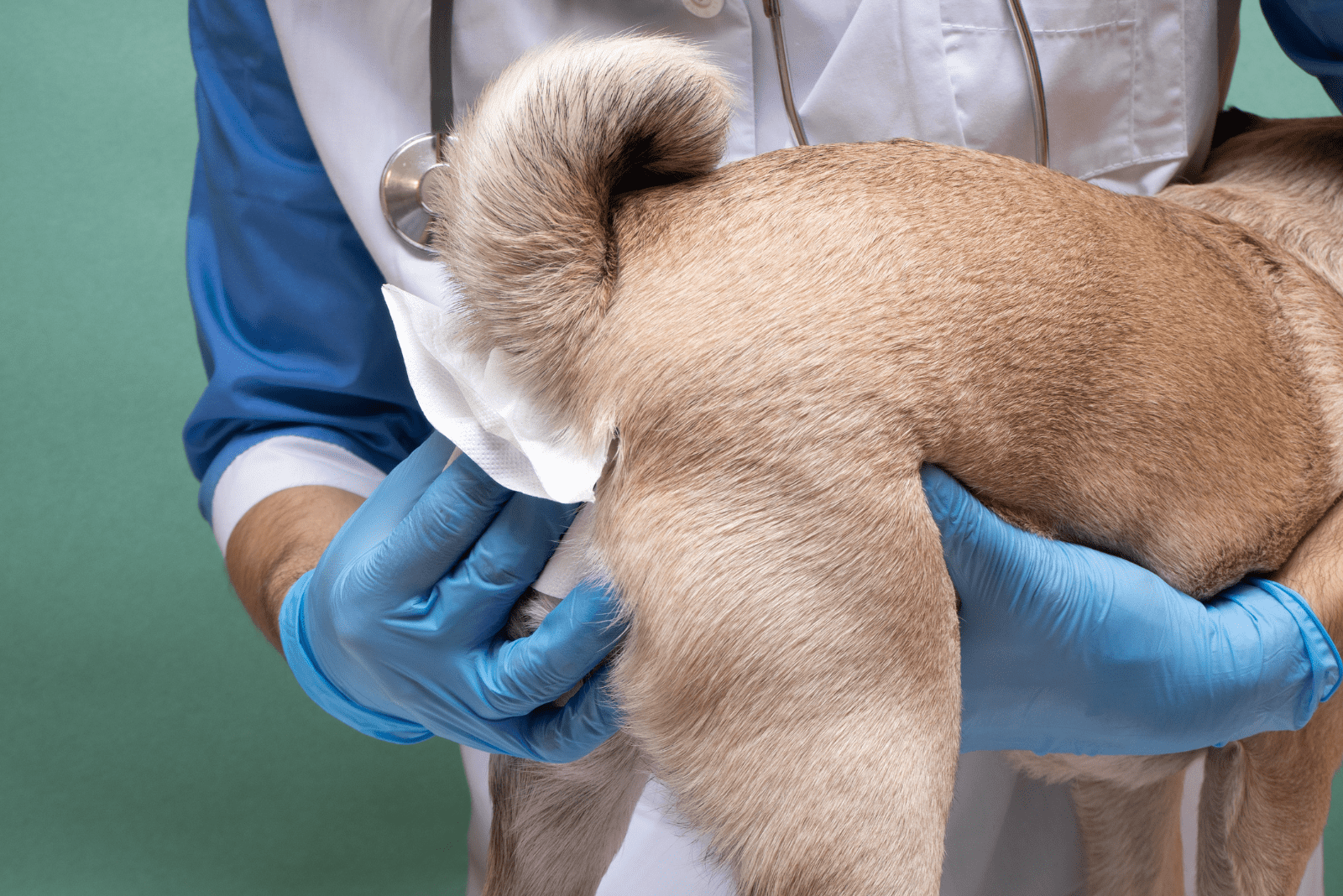
Dog anal gland expression can be done at home, because it is a relatively easy procedure. But, it may lead to complications if done improperly. This is why you must talk with your veterinarian beforehand and ask for advice.
Your vet is supposed to show you how it’s done or have him/her do it during an appointment.
There are many educational videos on the internet that show pet parents where the dog’s anal glands are located and how to manually express them.
You can choose between two methods of expressing your dog’s anal glands — the internal, and the external method.
Besides using fingers to drain the fluid from the anal sacs that’s making your dog scoot its butt, there is also a natural way to do it and it doesn’t include touching your dog’s bottom.
Where Are Dog’s Anal Glands Located?
Anal glands are located on both sides of your dog’s anus. Well, to be more precise, they are located around the dog’s anal opening, at around 4 to 8 o’clock .
The fluid that’s produced and accumulated within these anal glands has a very strong scent that is unique to every dog. This putrid smell that we find absolutely disgusting is actually a dog’s way to mark its territory and leave messages to other dogs.
When they are full, anal sacs feel like two large blueberries or grapes that are firm to touch.
The opening of dog’s anal sacs is located within the anus, so while expressing them, the fluid comes out through your dog’s anus.
How To Express Your Dog’s Anal Glands Manually
First and foremost — wear latex gloves. Okay, now let’s talk.
Before you begin finding your dog’s anal glands, you first want to get it to stay still and calm. If your dog is having zoomies or if it’s feeling very awkward and nervous, it’s best not to force it.
Once you have your pooch in a standing position, locate its bum! That was not difficult, was it? And you already know how to locate your dog’s anal glands.
External Method Of Expressing Your Dog’s Anal Glands
We will first explain the external method of expressing your dog’s anal glands because most dog owners decide on this one.
Here are the things you’ll need:
• Latex gloves
• Tissues
• Wet wipes
Once your dog is standing comfortably, using one hand lift the base of your dog’s tail. You should use your dominant hand for anal gland expression.
Put your thumb and index finger right below your dog’s anus. Position both of your fingers at around 4 to 8 o’clock and gently move them around this area to find your dog’s anal sacs.
Now that you have found the anal sacs, it’s time to gently push out the fluid from them.
If you see fluid coming out while you massage the dog’s anal glands, then you’re doing it right! Congrats on acquiring a very useful skill that not many pet parents acquire! Oh, and you might want to open the window because it reeks in here!
Remember, this is a delicate area and you should not squeeze your dog’s anal sacs nor should you apply too much pressure. This can only make things worse!
Internal Method Of Expressing Your Dog’s Anal Glands
Alright, the external method of expressing dog’s anal glands is pretty easy and most pet owners choose it over the internal method. However, the majority of veterinarians prefer the internal method because it gets the most liquid out of the dog’s anal glands.
Besides latex gloves, you will need:
• Lubricant (vaseline or just water)
• Tissues
• Wet wipes
Insert your lubricated and gloved index finger into your dog’s anus and try to locate the anal gland on one side using your thumb. Once you feel the dog’s anal gland, gently push forward with your thumb and index finger.
The key here is to “milk out” the anal sac liquid from the inside and outside.
This can get quite messy and smelly! So, make sure to place a few tissues right below your dog’s anus to absorb the liquid. You can also use cotton wool to absorb any leaks.
If you finished expressing the anal sac that’s located at 8 o’clock, repeat the same process for the anal sac that is located at 4 o’clock.
As you can see, the internal method expresses each anal sac individually, while the external method empties both at once.
Dog Scooting After Anal Glands Are Expressed
This can happen to anyone. Anal gland expression does not always mean that the dog will immediately stop scooting.
Yes, there is also a chance that you didn’t fully express your dog’s anal sacs if you’re doing this for the first time. So, the leftover liquid within the anal sacs is causing your dog to keep scooting after anal gland expression.
Another reason why your dog is scooting after anal glands have been expressed is because it feels mild discomfort and irritation. This usually lasts two to three days.
Most dogs stop showing sings of full anal gland problems after two to three days. But, if the dog keeps scooting even after three days of getting its anal glands expressed, then you should take it to the vet to see what’s up.
How Can I Express My Dog’s Anal Glands Naturally?
While the majority of veterinarians practice dog’s anal gland expression daily, there are some that are against the two manual methods. And, it all comes down to what you prefer better.
Natural ways of expressing your dog’s anal glands are effective, but they might take longer than expressing the anal glands manually.
Feeding your dog fiber-rich food or raw diet and incorporating daily exercise in its routine should do the trick in natural expression of the dog’s anal glands. But, again, it will take more time.
7. Use Anal Gland Supplements
Anal gland issues in dogs can be cured with a healthy diet. Specifically, supplements with components that support bowel movement and maintain a healthy gut microbiome are great for dogs with anal gland issues.
Search for anal gland supplements contain components like flaxseed and psyllium seed husk. When incorporated correctly into your dog’s diet, these two components are believed to reduce symptoms of anal gland problems.
Although they appear to be effective in theory, there are currently no studies to back them up.
What Is The Most Common Reason For Scooting In Dogs?
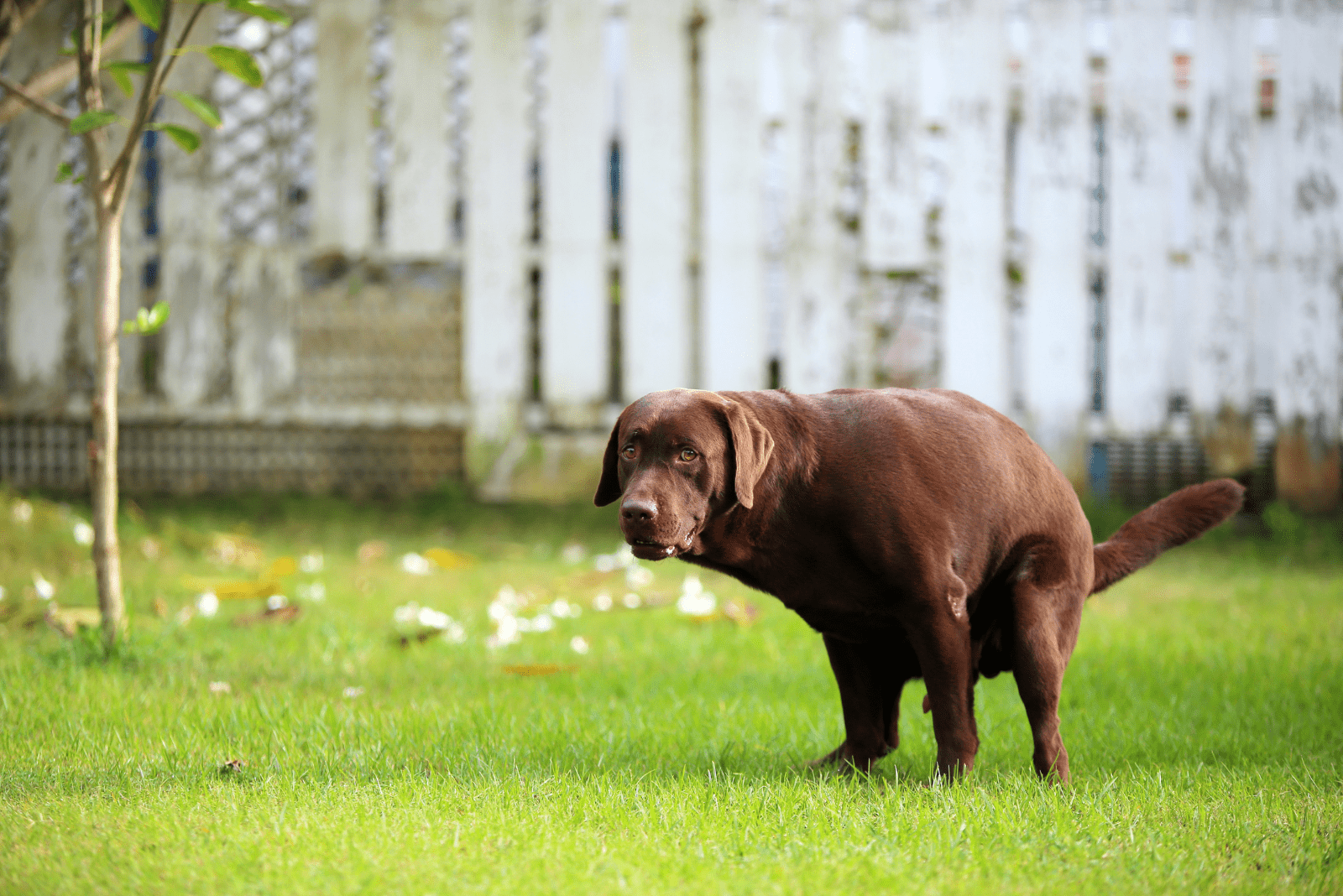
Your dog keeps dragging its rear end repeatedly across the floor, grass, carpet, everywhere! Although it may look funny for the first time, scooting can be a sign of bigger health problems.
Your dog may be acting in this way for a variety of reasons, which are listed below:
1. Intestinal Parasites
I noticed that in many cases, dog scooting indicates the presence of worms.
Intestinal parasites such as roundworms, hookworms, whipworms, and tapeworms are very common in all dogs — big and small. But, out of all these worms, tapeworms are the main culprits of dog scooting!
Dogs with intestinal parasitic infestation frequently have diarrhea, which causes an inflamed and irritated rear end.
Veterinarians require a stool sample to determine whether or not the dog scooting is caused from intestinal parasites. Experienced vets can tell by just looking at a dog’s bottom!
So, if anal sacs are empty, the main suspects should be intestinal parasites. Once you deal with this underlying health issue, the overall health of your dog will get better and its scooting problem will be a thing of the past.
Puppies can become infected with roundworms through their mother’s milk, but adult dogs can be infected by external parasites like fleas that can carry tapeworm larvae.
If you notice white specks in your dog’s poop, then you might want to go to your vet and have your dog’s stool examined.
2. Food Allergies
Dog allergies in general can be brought on by food, flea, and seasonal changes.
Another common, yet unusual cause of dog scooting are food allergies. To put it simply, food allergies in dogs cause skin irritation, rashes, and itching. So sometimes, a dog’s bottom will show these symptoms on the skin that are linked to food allergies.
Due to digestive issues brought on by dietary intolerances or allergies, your dog’s anal glands may not be functioning correctly.
Allergens that frequently cause allergies in dogs are compounds like soy, dairy, and wheat. And, we all know that dogs and dairy products don’t go well together.
Other allergens include eggs, chicken, and beef, which are the most common ingredients found in dog food. But, meat protein in dog kibble is processed and there are other ingredients in dog food that may cause food allergies. Most owners rather boil chicken for dogs rather than buy processed dog food.
If your dog routinely experiences digestive issues, they might be allergic to one or more of the previously mentioned foods.
If you suspect that your dog has a food allergy, talk to your veterinarian or veterinary nutritionist who can help you make changes in your dog’s diet. Without first consulting your dog’s veterinarian, avoid making any significant dietary changes.
3. Loose Stools
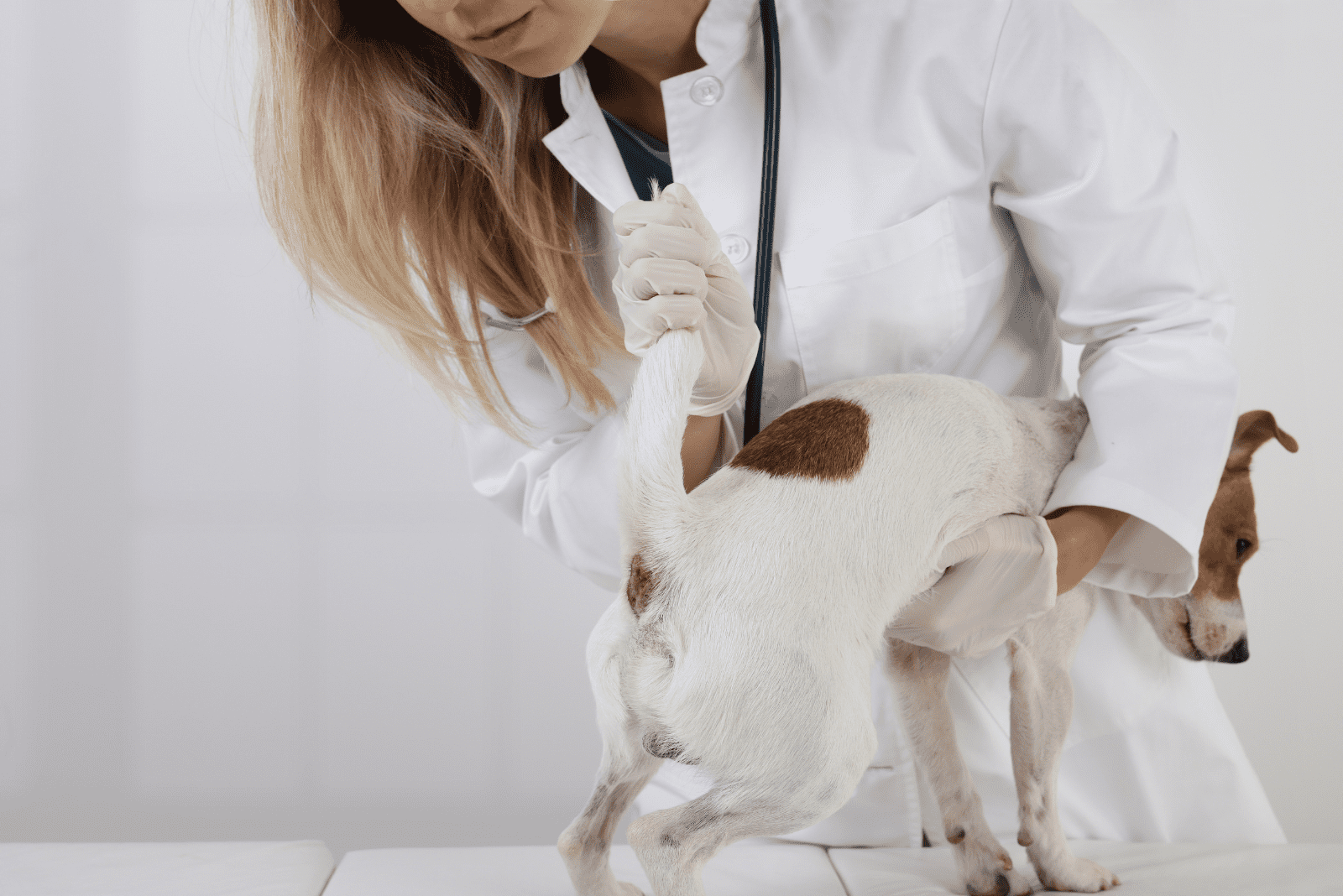
Your pooch may get diarrhea or loose stools if they have a food allergy or sensitivity. Dog scooting is often caused by loose stools. Are you wondering why?
Well, when your dog experiences frequent loose stools, its anal sacs can not empty themselves the ol’ natural way. And by natural way I mean solid poop.
What solid poop does is that it passes through the dog’s anus while applying pressure to anal sacs after which the anal sac fluid is expressed with defecation.
Loose stool only passes through the dog’s anus without putting pressure on the anal sacs after which they remain full and cause dog scooting. Loose stools and other problems can result from a diet that is low in protein, poor in fiber, or excessive in filler foods. Your dog’s poop may appear yellow and watery due to improper diet or troubles with its digestive system.
So, if your pooch is having loose stools, you should change its diet to help its digestive system to create more solid poop.
4. Impacted Anal Glands
Impacted anal glands, or in other words blocked anal glands in dogs are generally not something to panic about. But, if left untreated, impacted anal glands may progress to anal gland infection and abscesses.
Besides scooting, your dog may experience pain during defecation and constant need to scratch or lick its butt.
The problem here is when the dog’s anal glands arise when they aren’t entirely drained because the fluid within them became thick and dry. This makes the anal gland canal to become blocked and the fluid stays trapped within the anal sac.
Fortunately, impacted anal glands are simple to handle, but only if this issue is noticed on time.
5. Anal Gland Infection
As we previously mentioned, impacted anal glands equal anal gland infection, and in worst cases — anal gland infection may lead to formation of abscesses.
Another thing that can lead to anal gland infection is improper anal gland expression. Wait, that even rhymes! But in all seriousness, if you are not sure how to do it properly, rather have the vet or groomer do it for you.
Anal gland infection in dogs is a serious health condition that can turn very messy. And I’m talking about pus leaking from dog’s anal sacs that can be yellow or red, and extremely foul-smelling.
Abscess from when anal gland infection progresses. They develop into ball-like masses that are painful to touch, sore, and filled with pus. Abscesses around the dog’s anus can easily rupture which can lead to a more serious bacterial infection.
Your dog may exhibit anxiety or rage due to pain from anal gland infection. It may also poop inside the house as a result of anxiety, stress, and pressure around its anal region.
6. Yeast Infection
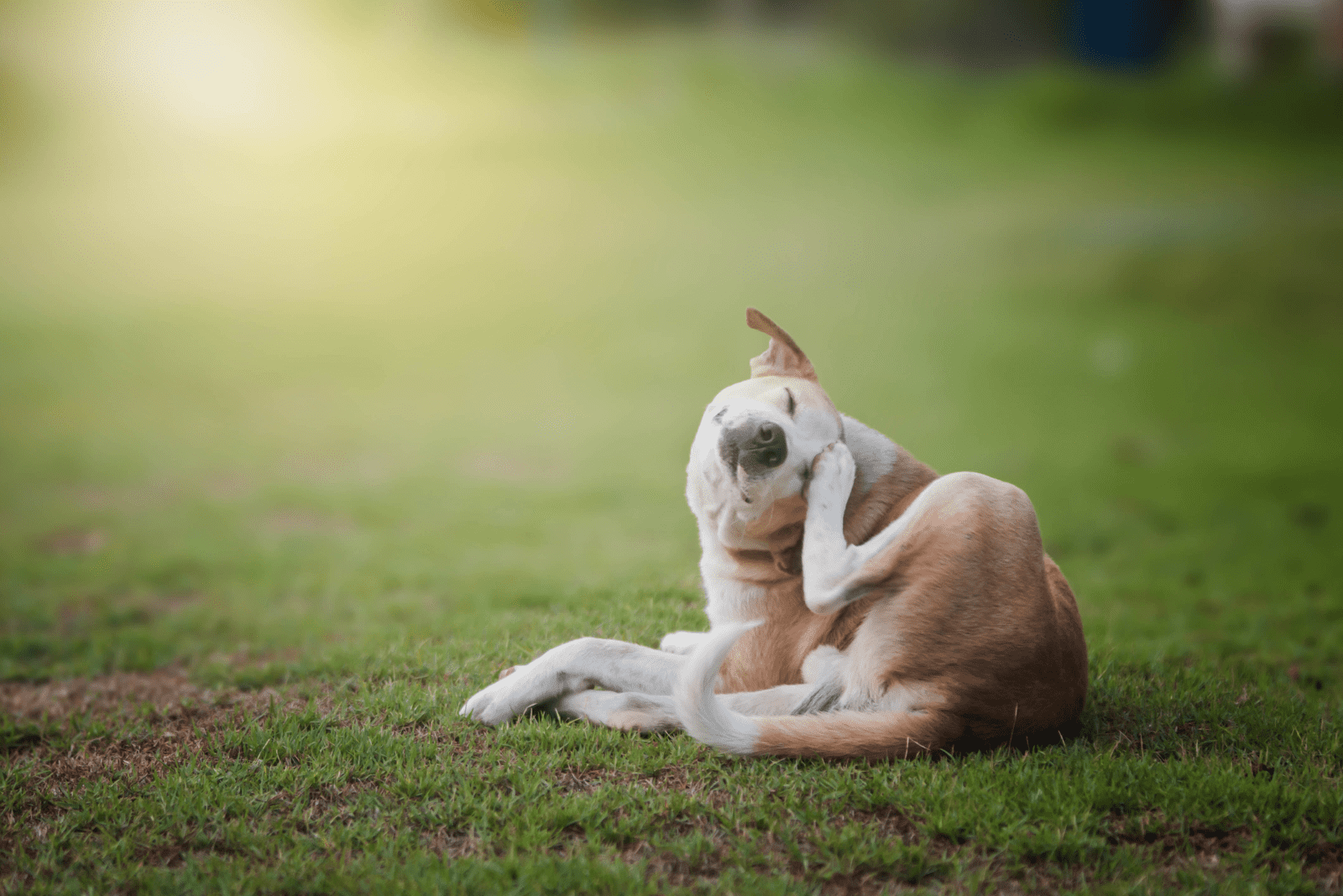
The most common one has a funky name — Malassezia dermatitis is to blame for your dog’s itchy butt!
Not only does it cause skin irritation around the dog’s anus and makes it scoot all day long, but it also causes inflammation and redness across the neck, armpits, abdomen, between paw pads, and toes. It’s basically everywhere! Plus, it smells awful.
To make things worse, yeast infections can cause your dog to lose its appetite, develop behavioral changes out of all that itchiness and it can even become aggressive.
Some dogs with yeast infection want to be left alone, which is usually when they develop other symptoms like lethargy and lack of appetite.
7. Dirty Bum
Unlike cats, dogs don’t clean their bum that often and they can have poop or dirt stuck to their rear end. Dog poop can also stick to hairs surrounding the area around its bum, which can cause discomfort and scooting.
Out of all these reasons why dogs scoot, a dirty bum is definitely nothing to worry about!
What Can I Give To My Dog To Help With Scooting?
The best home remedy for dog scooting is a high-quality diet because it all starts from the inside! Your dog’s digestive system and overall health should be in tip-top condition.
So, make sure to give your dog more:
1. Fiber
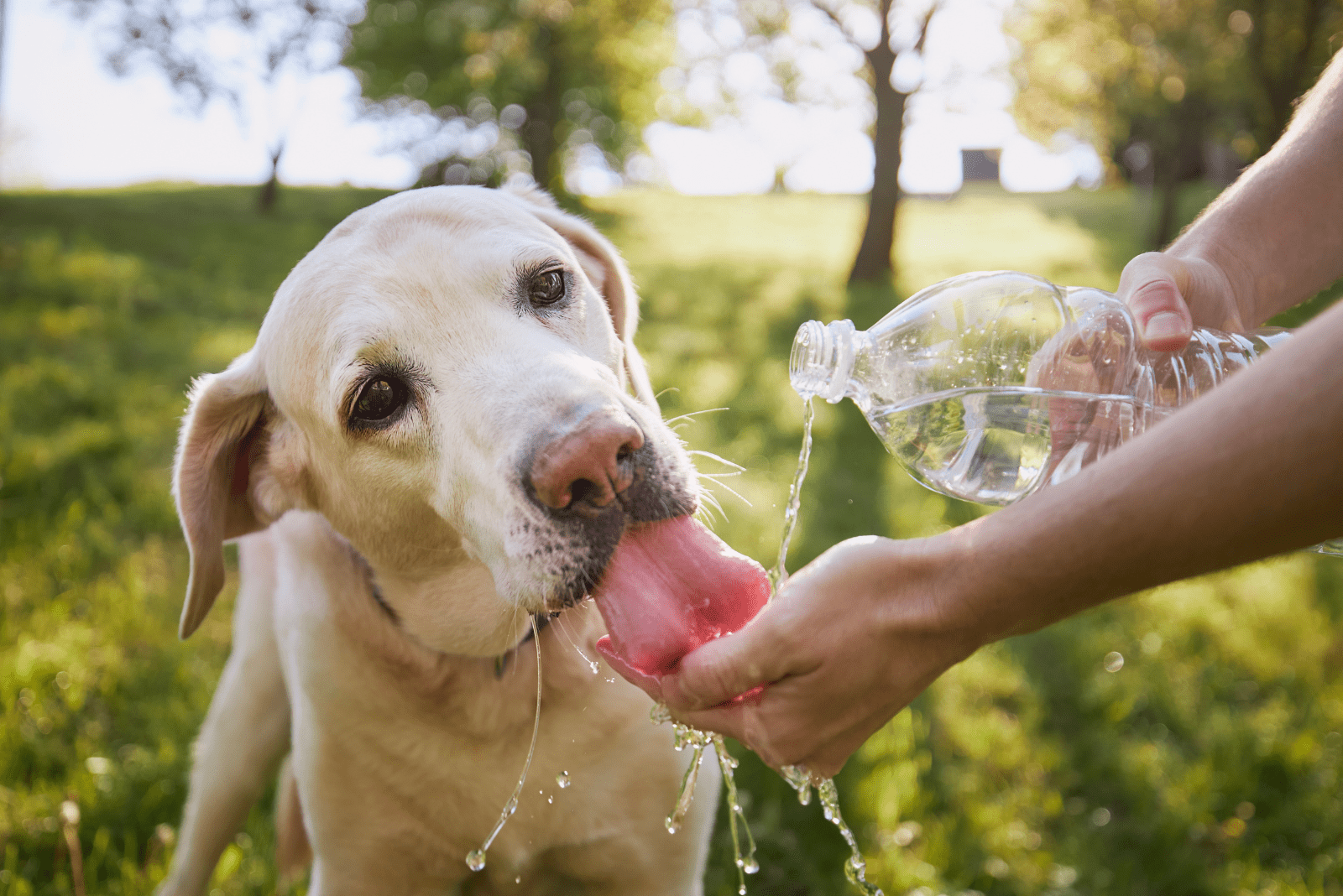
Fiber, fiber, fiber!
You will hear everyone say that you need to put your scooting dog on a diet that’s high in fiber. And, they’re not wrong!
So, how does fiber stop dog scooting?
Fiber in dog food makes dog’s poop bigger and more solid! It may sound funny, but bigger dog poop equals natural anal gland expression, which equals no more dog scooting!
Dogs benefit from a high-fiber diet, and unlike the majority of us humans, they frequently like it.
Give your dog foods that contain sweet potato, flax seeds, squash, pumpkin, and chia seeds. But keep in mind that your dog may not like all the high-fiber dog food that you give it. Your dog might need a couple of tries to start liking the high-fiber diet, especially if it is a picky eater!
2. Water
Keeping your pooch hydrated is one of the most important things ever! Water makes up most of your dog’s organism and aids in all physiological processes — as well as the formation of poop!
You may think that water will lead to loose stools, which is totally understandable because it can lead to loose stools and diarrhea, if given too much.
Adding water to your dog’s dry kibble, and having them drink a healthy amount of it will keep the bowel movements going and it will make your dog’s poop consistency just right.
3. Probiotics And Prebiotics
Probiotics are the good bacteria, and prebiotics are compounds that promote their growth.
Adding probiotic and prebiotic supplements to high-quality dog food is a good way to stop the dog scooting problem.
Probiotics and prebiotics are the most beneficial for healthy dogs. These two supplements do not work as well for dogs that are suffering from severe diseases and have their immune system weakened.
If you are administering a fiber supplement or eating a diet high in fiber, you want a source of prebiotic fiber to feed the good bacteria and support the microbiome in producing its own probiotics.
You can find many great probiotic and prebiotic supplement brands that sell their products for good prices at Amazon!
4. Vitamins
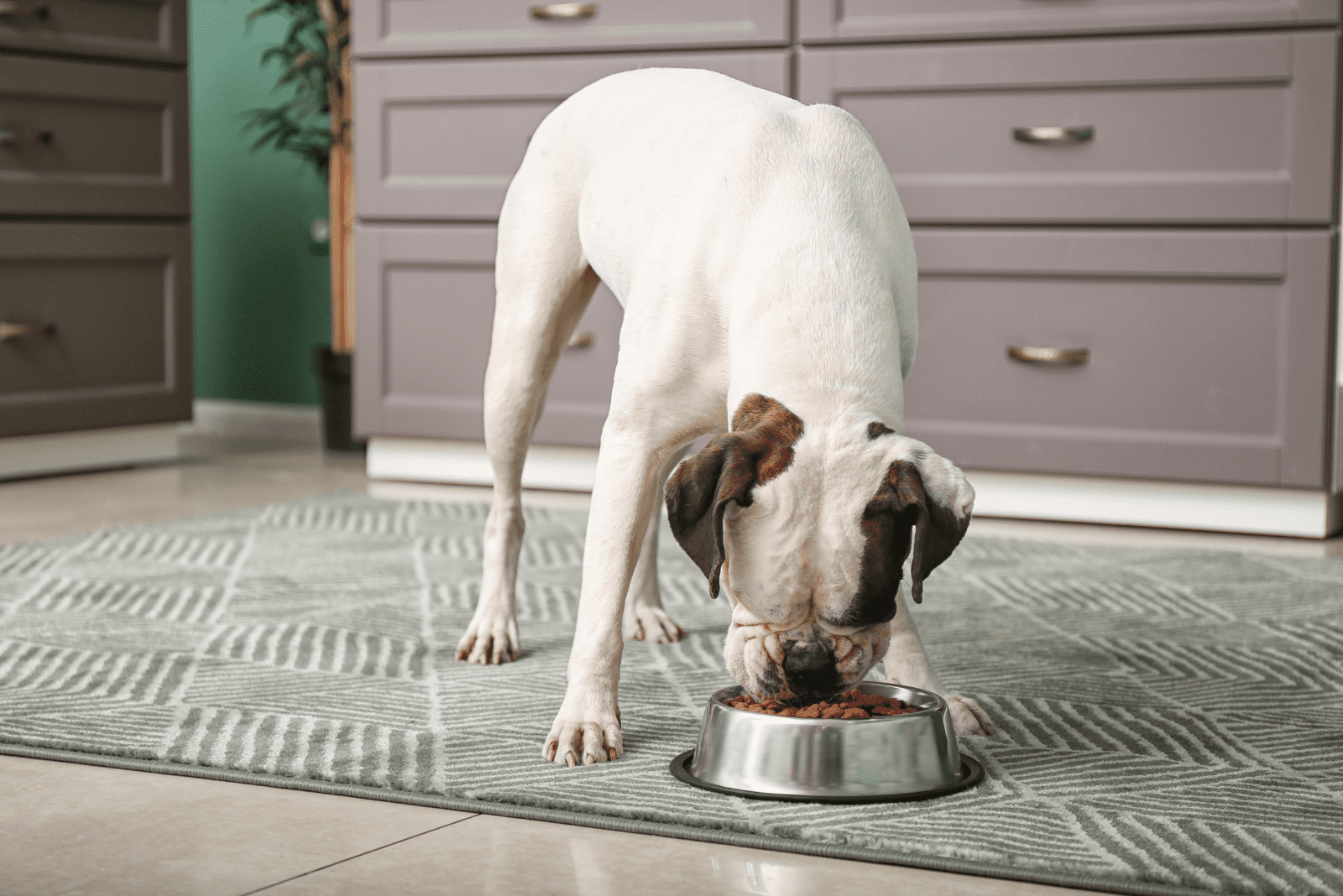
Vitamins such as A, D, E, K, and B12 are fantastic for your dog’s overall health.
Along with other components found in dog food, vitamins (especially vitamin E) aid in regular bowel movements and keep the gut healthy. This is important for poop formation and natural anal gland expression.
Moreover, vitamin A helps restore the skin’s barrier and the mucosa that makes up the dog’s anus. If your dog is suffering from anal sac disease or any anal gland problems, vitamins will help make the recovery process faster.
5. Healthy Fats
Fats should also be taken into account when planning a high-quality diet for pooches with anal gland problems.
Due to their anti-inflammatory properties, omega 3 fatty acids can help reduce the pain and swelling brought on by inflamed anal sacs.
Fish oils with a high omega-3 content can soften the feces and shield the delicate tissues in the rectum from harm caused by hard stools.
I’d advise either choosing a high-fiber diet with fish oil source or supplementing with veterinarian fish oil (or high omega 3 content).
Omega 3 fatty acids, in turn, are ideal for pets with skin allergies because they help restore the skin barrier and relieve itchy skin, which frequently coexists with problems with the anal glands. Besides that, these healthy fats may also help avoid constipation issues in dogs.
6. Enzyme Supplements
Enzyme supplements help your dog’s digestive system to function normally. They break down the food, making it easier for your dog’s body to produce healthy poop. And with healthy poop, its anal sacs can be naturally expressed!
Digestive enzymes have proven to be successful and do wonders for your dog’s health but they should not be used for healthy dogs.
If a dog is healthy, its body produces digestive enzymes and there is no need for enzyme supplements.
Older dogs that are having issues with bowel movements and overall digestive system problems may need these supplements.
7. Exercise
Let’s get going, keep that body moving! Adding an additional dog exercise session per day and encouraging more quality playtime is a way to go!
Your dog’s digestive system is simply more stimulated by good exercise. Regular exercise stimulates your dog’s bowel movements, increasing the frequency of dog poop!
Regular exercise and spending time with your scooting dog can not only make life more enjoyable for your pet, but will also aid with anal gland emptying.
Make sure to take your dog for lots of walks. Frequent exercise will help strengthen your dog’s abdominal and rectal muscles which will make pooping an ease!
What Should I Do If My Dog Has Scooting And Is Not Eating?
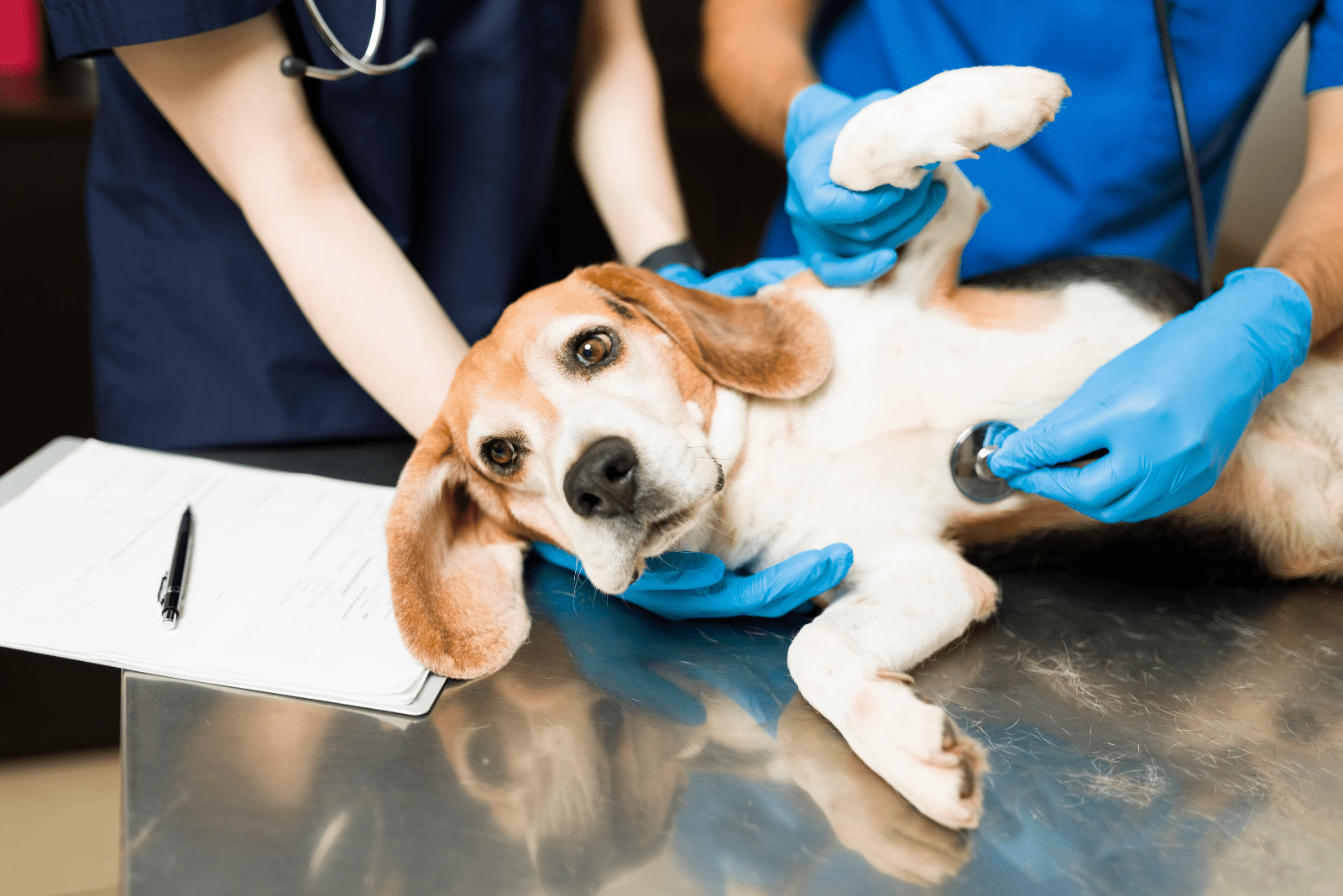
Take it to the vet!
Come on, you know how your dog is driven by food and simply loves to eat! Whenever you notice that your dog’s appetite worsened, especially if it is followed by other symptoms, you should contact your veterinarian.
When our furry friends are lethargic and do not feel like eating, there is probably something wrong with their overall health.
When To See The Vet
Due to the fact that dog scooting can turn into a serious infection and a very hard-to-treat health problem, it’s important to know the right time to take your scooting dog to the vet.
You should inform your vet about your dog scooting problem as soon as you notice it. After a quick call, the vet will determine whether or not your pooch should come for a quick health check-up.
You should take your dog to the vet if you see any of the following signs:
• Redness around your dog’s anus
• Dog scooting a few days (three or more) after anal gland expression
• Signs of lethargy and appetite loss
• Fever and nausea
• Frequent diarrhea
• Repeated episodes of vomiting
If you notice that your pup has severe diarrhea or it is vomiting white foam, make sure to take it to the vet as soon as possible. These conditions can quickly lead to dehydration which can be very troublesome for your dog’s health.
Final Thoughts
Dog scooting can be caused by something minor, but it can be a bigger health hazard. It can also be a result of an underlying health condition that may take its toll on your dog’s health. Basically, dog scooting can go from zero to a hundred really fast, if you are not cautious.
Home remedies for dog scooting are all handy, quick, and relatively easy, but you should not completely stick to them. I believe that home remedies for dog scooting are a good go-to if dog owners can’t get to the vet clinic at the moment.
Relying solely on these home remedies is not a wise idea.
If you notice that your dog is scooting frequently, but can’t make it to the clinic, then you should at least call and consult your veterinarian before trying any of these home remedies for dog scooting.
Related Content
9 Signs Your Dog Needs To Be Neutered
